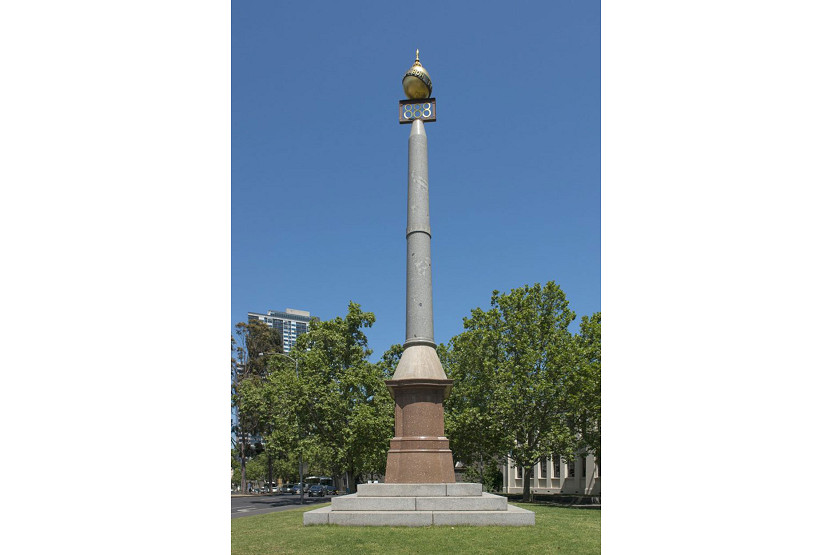Freeman Manuel and the Eight Hour Movement
My past two articles were about people whose graves in the Melbourne General Cemetery had been renovated by the now defunct Labour Graves Committee, particularly men who had been involved in the 19th century Eight Hour Movement.
One name stood out for me – Freeman Manuel – an unusual name in 19th century Melbourne. I was intrigued so I set out to find what I could about him through Trove and Ancestry.
In fact, he was a proud Welshman. He was born in Holywell, Flintshire in North Wales in 1829, the son of a gardener. He married Susanna Duncalf in 1849 in Liverpool. They had two sons, William in 1950 and Edwin in 1851. At the time of the 1851 census the family were living in Liverpool, where Freeman was working as a plasterer. Sadly, the two boys died, Edwin in the June quarter of 1851 but I was unable to find a date for William’s death. It is likely to have been around the same time. Another child, a daughter called Mary Elizabeth, was also born in Liverpool in 1852.
A second daughter, Susannah, was born in Victoria in 1854 so the family must have arrived in Melbourne on either side of 1853. The first reference to Freeman living in Australia relates to an article The Age in August 1854 when he was living in Moray St, Emerald Hill (later South Melbourne). He was a member of the fledgling Emerald Hill Fire Brigade, which was appealing for subscriptions. In 1855 The Age published details of a deputation, with Freeman’s name included, to the Emerald Hill Municipal Council, in relation to the collection of rates. Clearly Freeman was interested and involved in local affairs very soon after his arrival in Melbourne.
Agitation for the Eight Hour Day – eight hours of work, eight hours of leisure and eight hours of rest – was gaining strength in the mid 1850s. Although I could find no details, Freeman was certainly involved in the early movement as his name appears on the booklet commemorating the movement.
On January 29, 1859, he was declared insolvent, with debts of £216.5s and assets of £151.16s. The cause of his insolvency was recorded as depression of business and his threatened arrest under a judgment. A similar court appearance is recorded as having taken place in December 1864 but, as no creditors turned up on this occasion for the hearing the case was dismissed.
Welsh culture remained important to Freeman throughout his life. The original Welsh church was built in 1857 and rebuilt in the early 1870s, both on the same site in La Trobe St. The first Trades Hall building, a modest timber structure that once stood just north of the current Lygon St entrance, was completed in 1859. It was financed by workers and built by their own labour. It is highly likely that Freeman worked voluntarily on both these buildings, and this could have contributed to him neglecting his paid work and thus to his insolvency.
It was through his involvement with the Eight Hour Day movement that he made his mark. In 1874 he was chairman of the committee that oversaw the construction of the new Trades Hall building. A ceremony was held January 24, 1874 when the foundation stone was laid for the new building. Freeman, as chairman of the building committee, presented politician John Curtain, MLA, with a silver trowel. He then presided over a lunch that followed the formal procedure.
Freeman was involved in the continuing lobbying for the reform of labour laws, including issues such as weekly pay and early closing hours for shopkeepers. He was a prominent representative of the plasterers union and he travelled to Sydney as a union delegate at the 1885 Intercolonial Trades Union Congress.
Despite an inauspicious start, his employment appears to have done well. His funeral notice records that he had worked for the same builder, E.A. Parry of Sydney Rd, Brunswick, for 30 years, so he must have joined this firm around the time of his second insolvency.
One of his six daughters, Alice, born in 1860, died in 1877. Freeman had enough money to provide the remaining five with good marriages, including one, the marriage of Florence to John Stevens of Moonee Ponds, that took place on January 13, 1886. This was written up in great detail in the society paper Tabletalk. Amy was the youngest daughter and the last to marry. She married George Lancashire on January 22, 1887.
After Amy’s wedding, Susannah and Freeman were able to take a trip to visit their birthplaces. Shortly before they left, in April 1887, Freeman, a founding member of the Cambrian Society of Victoria, was presented with an illuminated address – a decorated formal document. It was embellished with the red dragon, the leek, and the Prince of Wales’s feathers. They returned in November of the same year.
Freeman died in the Alfred Hospital on March 14, 1894, and was buried in the Melbourne General Cemetery two days later, the funeral procession leaving from his home at 12 Erskine St, North Melbourne. There were several family tributes in local papers in a style very common during the Victorian era. Below is one from his youngest daughter, Florence, and a second inserted jointly by Florence and her mother Susannah:
No other one can fill your place.
A father good and brave,
I think of that good kindly face,
Now mouldering in the grave.
He is not dead whose memory lives
In hearts that know his worth.
And it is with these last words that we should remember Freeman Manual and the other women and men who have fought, and continue to fight, for a just and humane world. •
Caption: Photo of page showing names of those involved in the Eight Hour Movement.

Jo Ryan unveils Ordered Chaos at Blender Studios






 Download the Latest Edition
Download the Latest Edition